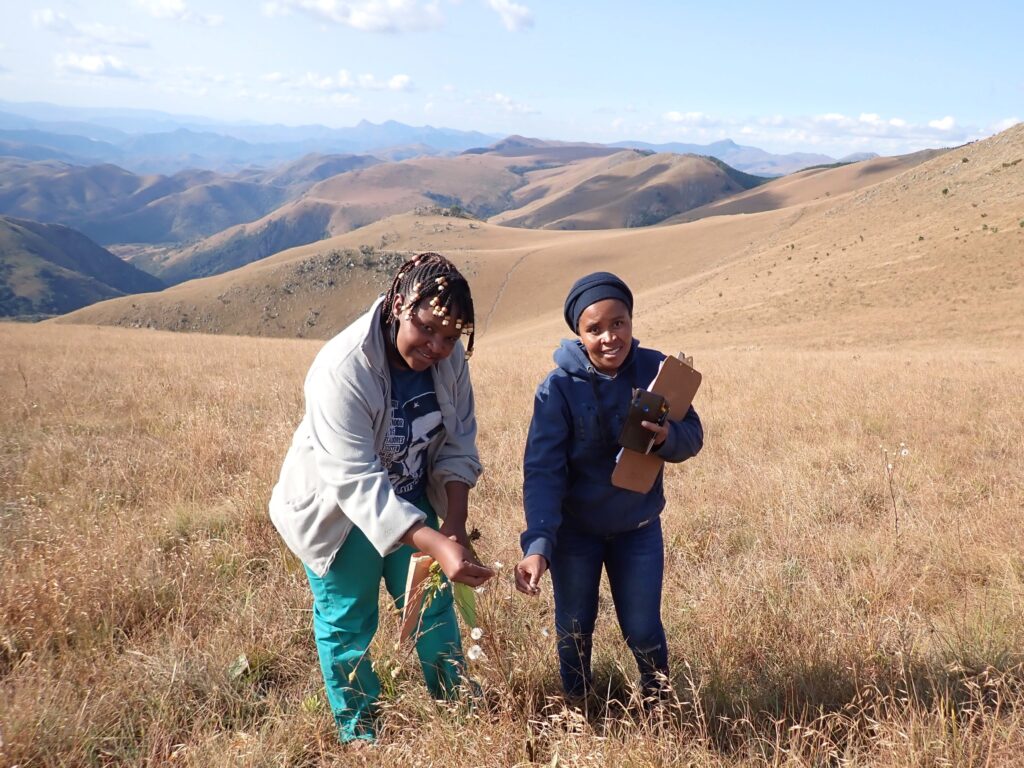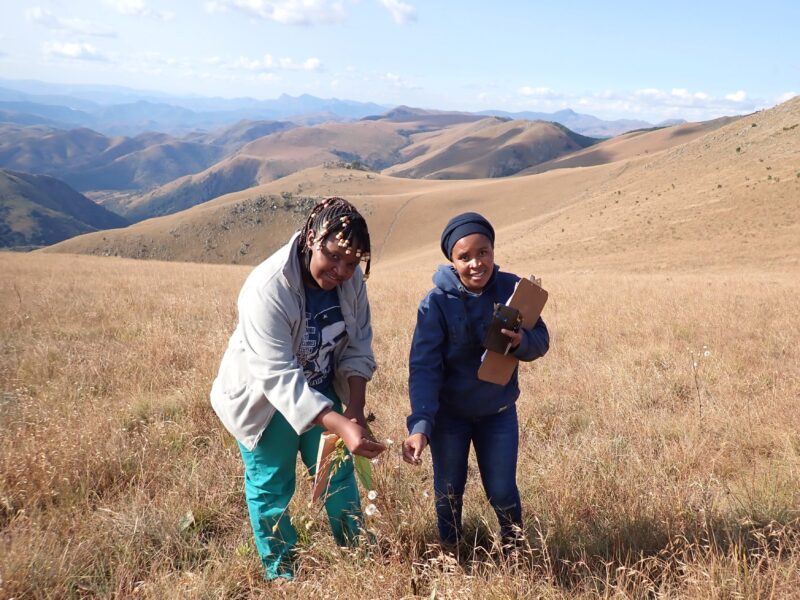 Two in five plant species in the world risk extinction and those in South Africa are no exception. It is a race against time to save them, and collecting and storing their seeds in seed banks is an effort to safeguard them for the future. Recently, Fergy Nkadimeng, a seed collector from the Millenium Seed Bank Partnership (MSBP) visited Mountainlands to collect plant seeds of species targeted for this purpose. Mountainlands is located in the Barberton Centre of Plant Endemism, which means it is home to several species that only occur here.
Two in five plant species in the world risk extinction and those in South Africa are no exception. It is a race against time to save them, and collecting and storing their seeds in seed banks is an effort to safeguard them for the future. Recently, Fergy Nkadimeng, a seed collector from the Millenium Seed Bank Partnership (MSBP) visited Mountainlands to collect plant seeds of species targeted for this purpose. Mountainlands is located in the Barberton Centre of Plant Endemism, which means it is home to several species that only occur here.
The MSBP is an international initiative with the aim to collect and conserve seeds from 25 percent of the world’s wild, endangered, rare and economically important plants for safe storage away from natural locations, at amongst others, Kew’s Millenium Seed Bank (MSB) in the United Kingdom. The MSB is the largest in the world and a genetic resource of plants from 97 countries. Currently, over 2.4 billion seeds are banked there and stored in sub-zero temperature, underground vaults which are bomb, flood and radiation proof.

Millenium Seed Bank Partnership Seed collector Fergy Nkadimeng (left) shows Morongwa Papola an intern how to collect seeds.
The South African National Biodiversity Institute (SANBI) forms part of the MSBP and have collecting teams based at botanical gardens across the country. Fergy hails from the Pretoria National Botanical Gardens. She will tell you that collecting seeds is not just picking whatever is available – the teams are trained how to distinguish unviable material from high quality seeds, which seeds to collect that can tolerate to be dried and frozen, to collect field data with herbarium specimens of the source plants and how to treat the seeds afterwards. Once she has completed her part, the seeds will be sent to Kirstenbosch Botanical Gardens in Cape Town for processing before being sent to the MSB together with the field data and herbarium specimens.
Seed banks are not a new invention. Humanity has been storing seeds for agricultural purposes for a very long time and the modern seed banks aim to have viable material available for hundreds of years. But you may rightfully ask how long can seeds be stored for? A seed is an embryonic plant encased in a protective layer, which means it is alive. The oldest mature seed that was successfully propagated into a plant was a 2000-year-old Judean date palm. It was recovered from an archaeological dig at Masada in Israel and the tree, which is still alive, has been nicknamed Methusaleh. But that is not the oldest seed material that has been used to grow a plant. That record goes to the species Silene stenophylla (narrow-leafed campion) from Siberia. The seed that was used by Russian scientists to propagate it was immature and Radiocarbon dating confirmed the age to be a whopping 31 800 years (give or take 300 years). The seed material was part of a prehistoric squirrel stash that was discovered in permafrost and apparently the ancient version closely resembles its modern counterpart.

